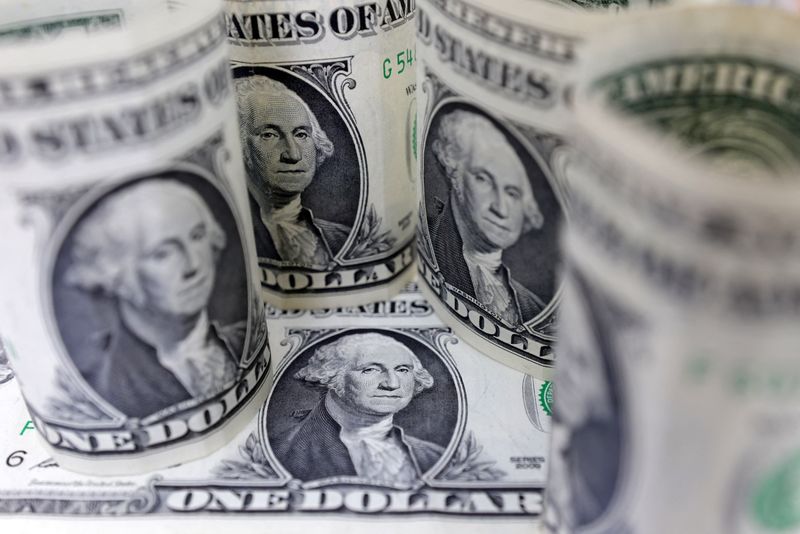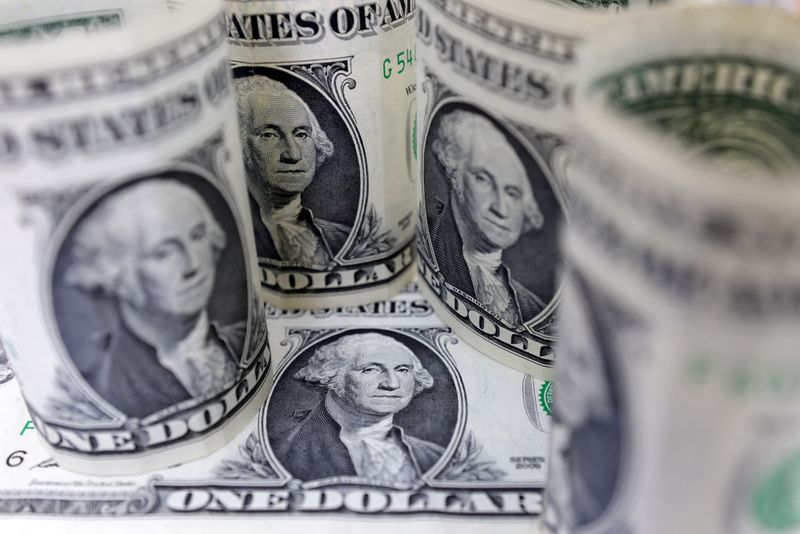Forex
Dollar edges down as Fed meeting minutes meet expectations


© Reuters. FILE PHOTO: U.S. Dollar banknotes are seen in this illustration taken July 17, 2022. REUTERS/Dado Ruvic/Illustration/File Photo
By Karen Brettell
NEW YORK (Reuters) -The edged lower on Wednesday after minutes from the Federal Reserve’s January meeting came in largely as expected and showed that the bulk of policymakers were concerned about the risks of cutting interest rates too soon.
Traders have pushed back expectations on when the Fed will begin cutting rates to June as officials caution that they want to see more evidence that inflation will continue to decline.
“Participants highlighted the uncertainty associated with how long a restrictive monetary policy stance would need to be maintained” to return inflation to the Fed’s 2% target, said the meeting minutes.
“The overall message is that they’re watching the progress but they’re not quite there,” said Vassili Serebriakov, an FX strategist at UBS in New York.
Higher than expected consumer and producer price inflation last week has raised the possibility that the Fed could hold rates higher for longer, or even make further hikes if it continues.
However, retail sales numbers and other data have also been showing some signs of weakness, which has sent the greenback lower over the past week.
“There is still enough of a question mark with respect to incoming data and as a result we’ve seen the dollar come under a bit of pressure,” said Bipan Rai, North American head of FX strategy at CIBC Capital Markets in Toronto, adding, “This is really a data driven environment.”
Richmond Fed President Thomas Barkin said Wednesday that the inflation data will complicate upcoming Fed rate decisions.
The dollar index was last down 0.04% on the day at 104.00, after reaching 103.79 on Tuesday, the lowest since Feb. 2.
The euro gained 0.1% to $1.0815. The greenback rose 0.13% to 150.19 yen .
UBS’ Serebriakov notes that traders are staying in carry trades as the expected timing of rate cuts are pushed back, which has led low-yielding currencies like the yen to underperform. In carry trades investors sell low-yielding currencies and invest in higher-yielding currencies.
“As long as equities are stable or moving higher, that means risk sentiment is strong and that favors carry trades in FX,” he said.
Sterling was up 0.11% at $1.2632 after figures showed Britain chalked up its highest ever monthly budget surplus in January ahead of finance minister Jeremy Hunt’s annual budget in March.
“The ‘record’ surplus does not mean that the UK is firing on all cylinders and generating cash significantly faster than before. The surplus was lower than expected,” said Kathleen Brooks, research director XTB.
“Economic growth is still likely to remain sluggish, so today’s data is unlikely to factor into the BOE’s decision on when to cut rates.”
In cryptocurrencies, bitcoin () fell 1.96% to $51,028.

 Forex3 years ago
Forex3 years agoForex Today: the dollar is gaining strength amid gloomy sentiment at the start of the Fed’s week

 Forex3 years ago
Forex3 years agoUnbiased review of Pocket Option broker

 Forex3 years ago
Forex3 years agoDollar to pound sterling exchange rate today: Pound plummeted to its lowest since 1985

 Forex3 years ago
Forex3 years agoHow is the Australian dollar doing today?

 Cryptocurrency3 years ago
Cryptocurrency3 years agoWhat happened in the crypto market – current events today

 World3 years ago
World3 years agoWhy are modern video games an art form?

 Commodities3 years ago
Commodities3 years agoCopper continues to fall in price on expectations of lower demand in China

 Economy3 years ago
Economy3 years agoCrude oil tankers double in price due to EU anti-Russian sanctions























